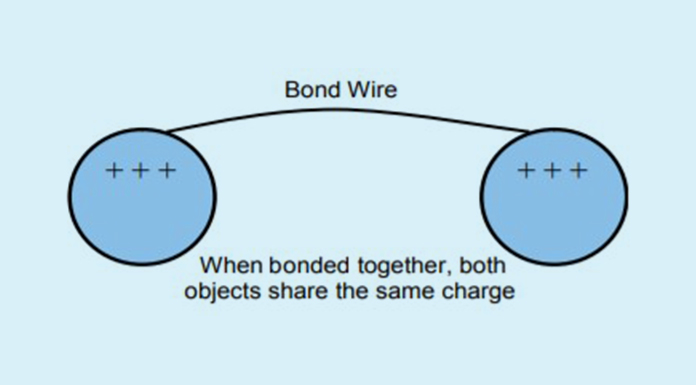Now that it’s winter time, the humidity is lower than normal. Have you noticed that as you walk across the carpet to grab a doorknob, you felt a slight electric shock? How about when you opened the dryer door – did you see some of the clothes still clinging together? Or, did your hair stand on end as you brushed your hair this morning? If so, you have just experienced the effects of static electricity.

Static electricity
Static electricity is the result of an electrical charge that forms when two materials are linked together and then pulled apart. One surface becomes positively charged and the other negatively. In a flammable work environment, or during the unintentional release of flammable vapors or dusts, a static electricity spark could result in a much more than frizzy hair.
The examples above are common, but here are some examples that you may not have considered:
- Polypropylene rope sliding through certain types of gloves.
- The flow of a flammable liquid, such as gasoline, from a tank to a container or your vehicle while refueling.
- The dispensing of a flammable, such as paint thinner, from one container to another.
- Dry powder passing through a chute or on a conveyor.
- A non-conductive belt on a drive pulley on a piece of equipment.
Bonding and grounding
So, how can you reduce the exposure to static electricity? A couple of methods include “bonding” and “grounding.” Bonding is the connection between one container and another so that the electrical charge flows between the two.
Grounding is the connection between an item or container and the Earth (ground). A simple wire connection to solid earth is a suitable example. Most (if not all) buildings are grounded. As steel structures are built they are all interconnected, (think bolted, welded, screwed) the building is grounded by a metal rod driven into the ground to eliminate the charges as they are produced. Or think of in your home, your wash machine has a wire to the cold water pipe. The pipe is buried in the ground outside the home providing a ground.
You can also continually monitor the work environment’s relative humidity, and use bonding or grounding when the concern for flammable vapors or dusts is present.
Other means of prevention include static collectors, anti-static additives in liquids, and controlling static electricity on employees, vendors and contractors performing service work.
So, if you aren’t sure if your company has the potential for static electrical issues talk to your people. Line employees, shift supervisors, department heads. Ask maintenance if they have received reports, or if any of the above apply. If you get a Yes answer from anyone, bring it to the attention of management immediately.

















